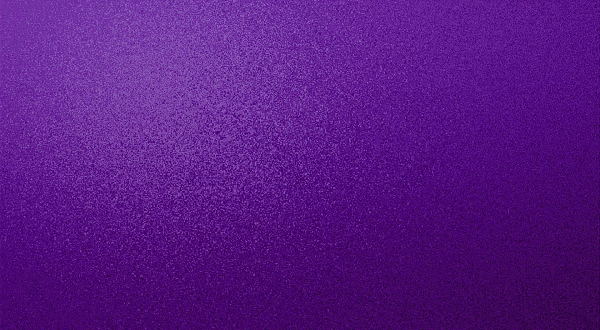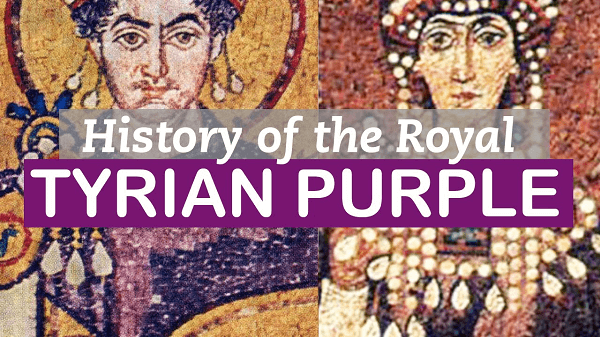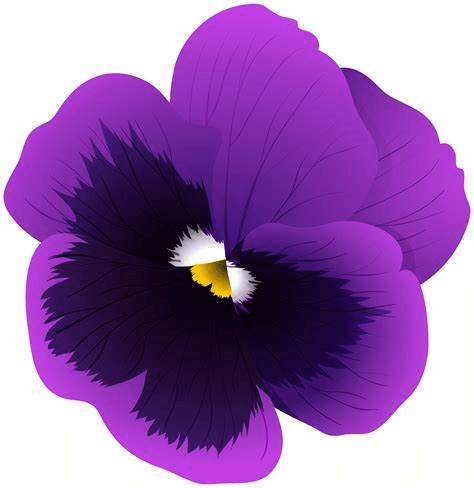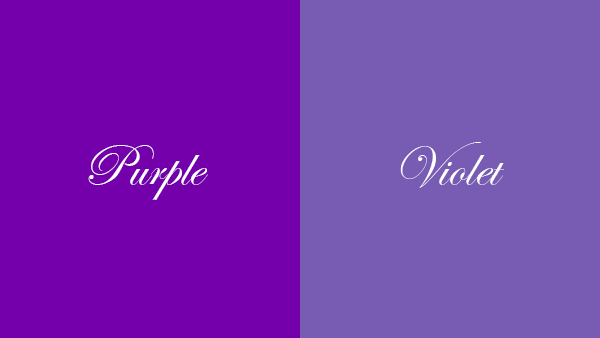Difference Between Purple and VioletPurplePurple is any of the different varieties with shades of red and blue. In the RGB variety model utilized in PC and TV screens, purples are delivered by blending red and blue light. In the RYB variety model, generally utilized by painters, purples are made with red and blue colors. In the CMYK variety model utilized in printing, purples are made by consolidating red shade with either cyan color, dark color, or both. 
As a Tyrian purple dye, historically manufactured from the mucus production of a kind of snail, was very costly in antiquity, purple has long been linked with royalty. Purple was originally the imperial color worn by Roman magistrates; it then changed to be worn by Holy Roman and Byzantine emperors and afterward by Roman Catholic bishops. In Japan, the monarch and nobility are historically connected with the hue. Per contemporary overviews in Europe and the US, purple is the variety most frequently connected with extraordinariness, sovereignty, sorcery, secret, and devotion. When joined with pink, it is related to sensuality, womanliness, and enchantment. In Art, History, and FashionNeolithic-era artwork featured purple for the first time. Animals and the contour of the painters' hands were painted on the cave walls at Pech Merle and other Neolithic sites in France using manganese and hematite powder sticks. The dates of these constructions range from 16,000 to 25,000 BC. As soon as the fifteenth century BC the residents of Sidon and Tyre, two urban communities on the bank of Old Phoenicia (present-day Lebanon), were delivering purple from an ocean snail called the sharp color murex. Both the Iliad of Homer and the Aeneid of Virgil make mention of attire colored in the Tyrian hue. Tyrian purple is the name given to the deep, rich color generated by this snail. Making the dye was a time-consuming, challenging, and expensive procedure. Many little snails had to be located, their shells split, and the snail extracted. At the historical locations of Tyre and Sidon, mountains of empty shells have been discovered. After letting the snails soak, a little gland was excised, the juice collected, and a bowl with the contents was set in direct sunlight. A tremendous metamorphosis happened there. When exposed to sunlight, the liquid first appeared white, then a yellow-green, then green, then violet, and finally a red that grew darker and darker. The interaction must be halted with perfect timing to get the ideal tone, which could go from a dazzling ruby to a dull purple, the shade of dried blood. Then, at that point, either fleece, cloth, or silk would be colored. The shade fluctuated between ruby and violet, yet it was dependably rich, brilliant, and enduring. 
Tyrian purple came to be associated with monarchs, aristocrats, priests, and judges throughout the Mediterranean. Scarlet is mentioned in the Hebrew Bible (Old Testament). In the Book of Exodus, God instructs Moses to ask the Israelites to send him an offering, which includes cloth "of blue, and purple, and scarlet," to be used in the Tabernacle's curtains and the priests' garments. The term for purple used in the fourth-century Latin Vulgate translation of the biblical text is purpura or Tyrian purple. The tails of the Trojan soldiers' horses are dipped in purple, while Ajax's belt in Homer's Iliad is purple. The covers of Odysseus' bridal bed in the Odyssey are purple. Purple shoes manufactured by the dyers of the Lydian Greek empire are praised in Sappho's songs from the sixth century BC. In the play of Aeschylus from the fifth to fourth centuries BC, Queen Clytemnestra welcomes her husband Agamemnon back by adorning the palace with purple carpets. King Solomon is said to have invited Tyrean artisans around 950 BC to produce purple textiles for the Temple of Jerusalem's decoration. Tyrian purple was worn by the leaders of Ptolemaic Egypt, Alexander the Incomparable (while tending to majestic crowds as the basileus of the Macedonian Realm), and the basileus of the Seleucid Domain. An Etruscan tomb artwork from the fourth century BC depicts a nobleman wearing a rich purple and embroidered toga, suggesting that the Etruscans may have been the source of the Roman tradition of wearing purple togas. The Toga Praetexta was a common white toga in ancient Rome that had a thick purple stripe bordering it. It was worn by unmarried freeborn Roman youths, curule magistrates, some types of priests, and a few other classes of citizens. Strong purple with gold threads made up the Toga Picta. It was worn by commanders in triumph during the Roman Republic and by Praetor Urbanus as he entered the marketplace at the Ludi Apollinares while riding in the chariot of the heavenly creatures. During the Domain, the frock picta was worn by justices giving public gladiatorial games, the representatives, and the ruler on unique events. Roman Senators wore togas with a purple stripe. In contrast, the recognized general wore a wholly purple toga with a gold border when a triumph was celebrated under the Roman Republic. Purple, however, became increasingly more identified during the Roman Empire only with the emperors and their commanders. As per Suetonius, a few purple colors were banned by Nero, and the early ruler Caligula had the Lord of Mauretania killed in light of the magnificence of his purple robe. The selling of purple fabric was made into a state monopoly during the late empire, and the death sentence safeguarded it. Extending from a reddish to a bluish purple, the true color of Tyrian purple. The first-century BC Roman author Vitruvius said that the southern, Hexaplex trunculus and maybe Bolinus brandaris murex shells produced a richer blue tint than the northern, Bolinus brandaris ones. As seen in the mosaics of Emperor Justinian's robes at Ravenna, it was claimed that the colors closest to the color of dried blood were the most prized. In present-day times, Tyrian purple has been reproduced at a tremendous cost. When German physicist Paul Friedander attempted to reproduce Tyrian purple in 2008, he wanted twelve thousand mollusks to make 1.4 ounces of color, enough to color a hanky. In 2000, a gram of Tyrian purple produced using 10,000 mollusks per the first equation cost 2,000 euros. In Science and NatureThe names of the colors violet and purple have different connotations even among native English speakers, such as between the United Kingdom and the United States. When writers from various nations and linguistic backgrounds contribute to an optics study on purple and violet, the use and interpretation of the two colors are likely to be inconsistent. Purple, unlike violet, isn't a hue of the visible spectrum, according to certain English speakers and authors. Despite the word "purple" being used in earlier draughts of Isaac Newton's work and being replaced by "violet" in the final draught, it was not one of the rainbow colors that Newton identified. Some authors contend that purple doesn't have a unique light spectrum. It is referred to be a non-spectral color as a result. Some English speakers claim that purple is only two main colors-red and blue-combined in different ratios. Other English speakers call the same spectrum of hues as violet. In certain course books on color hypothesis and contingent upon the topographical social beginning of the writer, a "purple" is characterized as any non-phantom color among violet and red (barring violet and red themselves). The ghastly colors violet and indigo wouldn't be shades of purple. For different speakers of English, these colors are shades of purple. 
Purple is positioned between red and violet on the classic color wheel that painters have long employed. However, depending on the writers' and artists' cultural backgrounds, there is also a lot of variance in the terminology used for colors here. For example, "violet" may occasionally be used and positioned between red and blue on the conventional color wheel. Purple is positioned between magenta and violet on the color wheel in a slightly different version. The RGB color model, named after the colors red, green, and blue and used to create all the colors on a computer or television, combines red and blue light of varied intensities on a black screen to produce a range of purples. Purple is the default color for HTML, and it is created by an equal amount of red and blue light at a brightness that falls between full brightness and complete darkness. In color printing, the maroon occasionally addresses purple or, in some cases, by blending Red with red or blue. It can likewise be made by blending red and blue alone; however, all things considered, purple is less splendid, with lower immersion or power. A specified amount of the third fundamental color can be added to light or paint to create a less vibrant purple (green for light or yellow for shade). VioletViolet is the light color at the short wavelength end of the visible spectrum, occupying the space between blue and the undetectable ultraviolet. It is one of the seven hues that Isaac Newton identified in 1672 after segmenting the visible light spectrum. The wavelength of violet light is between 380 and 435 nanometers. The violet flower is where the name of the hue comes from. Violet is made by mixing red and blue light with more blue than red in the RGB color scheme used in computer and television screens. The ancient Egyptians created a violet color by blending crushed green grapes with mulberry juice. The slave clothes of the Gauls were dyed violet by the use of bilberry, according to the Roman writer Pliny, the Elder. While the purple produced by these dyes was adequate, it rapidly faded in the sunshine and after washing. Rubus berries, like blackberries, were a popular source of colors in ancient times. R model generally utilized by painters, violet is made with a blend of red and blue shades and is situated among blue and purple on the color wheel. In the CMYK color model utilized in printing, violet is made with a mix of maroon and cyan shades, with more fuchsia than cyan. 
Purple and violet go along quite well. Purple is the color of different combinations of red and blue (or violet) light, some of which people perceive as being similar to violet, as opposed to violet, which is a spectral hue in optics (related to the color of various single wavelengths of light). These phrases can describe various hues between blue and red in everyday speech. As Tyrian purple dye was so valuable in antiquity, violet has always been associated with royalty. The Byzantium and Roman emperors both donned purple togas. Bishops and university professors wore violet during the Middle Ages, and the hue was frequently depicted in artwork as the Virgin Mary's gowns. The color violet is symbolic in Chinese art, representing "the ultimate harmony of the world" and "unity transcending the duality of Yin and yang." The Crown Chakra is connected to purple and violet in Buddhism and Hinduism. According to one European study, violet is the hue that individuals most frequently relate to excess, individuality, vanity, and ambiguity. In ScienceViolet is located at one end of the visible light spectrum, between blue light, which has a wavelength higher than violet light, and ultraviolet light, which is shorter than violet light and is invisible to humans. Light with a wavelength between 380 and 435 nanometers is considered violet. Due to the low sensitivity of human eyesight to violet wavelengths, items in this spectrum frequently seem dark. Although spectral Red is at the opposite end of the visible spectrum from violet to (typical trichromat) humans, violet light appears a little redder than spectral blue because the Red is somewhat added to the red-versus-green opponent channel by the S-cone type, which is the one most sensitive to short wavelengths (which at the longer blue wavelengths gets counteracted by the M-cone type). Chemistry - Pigments and DyesThe minerals manganese and hematite were used to make the earliest violet colors at any point utilized by people, which were found in ancient cavern artworks. The Aranda people, a clan of indigenous Australians, continue to utilize manganese as a traditional pigment for painting the skin during ceremonies. The Hopi Tribes of Arizona also use it to dye ritual artifacts. The most well-known violet-purple dye in antiquity was called Tyrian purple, and it was manufactured from a type of Mediterranean sea snail called the murex. The islanders of western Polynesia used ocean imp to create a violet color resembling Tyrian purple. In Focal America, the occupants made a color from an alternate ocean snail, the purpura, tracked down on the shores of Costa Rica and Nicaragua. The Mayans utilized this color-to-color texture for strict services, and the Aztecs involved it for works of art of ideograms, where it represented eminence. 
Throughout the Medieval Ages, most painters created purple or violet hues on their works of art by blending red and blue pigments-typically blue lapis lazuli or azurite with red ochre, cinnabar, or minimum. Indigo or woad dye for blue and cochineal dye for red were mixed with powder to create lake hues. Another popular violet dye was orcein, often known as purple moss. The ancient Greeks and Hebrews employed it. It was made from an ammoniac, usually urine, and a Mediterranean lichen called archil, sometimes known as Dyer's moss (Roccella tinctoria). As violet and purple replaced black as the hue of demi-mourning and was worn after a widow or widower wore black for some time before returning to wearing standard colors, orcein started to regain favor in the 19th century. In the 18th century, scientists in England, France, and Germany created the first synthetic colors. During about the same period, two synthetic purple dyes were created. Cudbear, a dye derived from orchil lichens, may color wool and silk without needing a mordant. First, a solution of ammonium carbonate is used to boil the lichen. Dr. Cuthbert Gordon of Scotland invented cudbear, and production started in 1758. Ammonia is added, the liquid is cooled, and it is kept wet for 3-4 weeks. The lichen is then dried and powdered into a fine powder. The production facility was enclosed by a wall ten feet high, and a staff of Highlanders under oath to maintain secret was assigned to guard the manufacture details. French purple was created in France at about a similar time. The lichen is separated by pee or alkali. Then the concentrate is fermented, and the break-up color encourages and washed. Then it is broken up in alkali once more, and the arrangement is warmed in the air until it becomes purple; then, at that point, it is accelerated with calcium chloride; the subsequent color is stronger and more stable than different purples. Cobalt violet was developed as a synthetic pigment in the second part of the 19th century. It is produced using the same method as cobalt blue, cerulean blue, and cobalt green. Together with manganese violet, it is the violet pigment that painters use the most nowadays. Inadvertently, mauveine was the first synthetic organic chemical color found in 1856. Also called Perkin's mauve and aniline purple. The name of the compound's chemical form is 3-amino-2,9-dimethyl-5-phenyl-7-(p-tolylamino) phenazinium acetate. A brand-new class of synthetic organic pigments called quinacridones entered the market in the 1950s. The group's hues contain the chemical formula C20H12N2O2, ranging from deep red to violet. Because of their outstanding resistance to sunlight and washing, they are used in oil paints, watercolors, acrylic paintings, automobile coatings, and other industrial coatings. In History and ArtOne of the first colors that humans utilized was violet. The 25,000-year-old prehistoric cave art at Pech Merle, France, has traces of a very dark violet created by crushing the mineral manganese, mixing it with water or animal fat, and then brushing it on the cave wall or applying it with the fingers. It has also been discovered at Lascaux and the Altamira cave. It was occasionally utilized as a substitute for black charcoal. Manganese drawing sticks have been discovered in Neanderthal-occupied sites in France and Israel. It indicates from the grinding implements at different locations that it may have also been used to paint the body and adorn animal hides. 
As of late, the earliest dates on cave canvases have been pushed back farther than 35,000 years. Handworks of art on rock walls in Australia might be considerably more established and date back similar to 50,000 years. Rubus berries, like blackberries, were a popular source of colors in ancient times. The ancient Egyptians created a violet color by blending crushed green grapes with mulberry juice. The slave clothes of the Gauls were dyed violet by the use of bilberry, according to the Roman writer Pliny, the Elder. While the purple produced by these dyes was adequate, it rapidly faded in the sunshine and after washing. Key Difference Between Purple and Violet
Next TopicDifference between
|
 For Videos Join Our Youtube Channel: Join Now
For Videos Join Our Youtube Channel: Join Now
Feedback
- Send your Feedback to [email protected]
Help Others, Please Share










